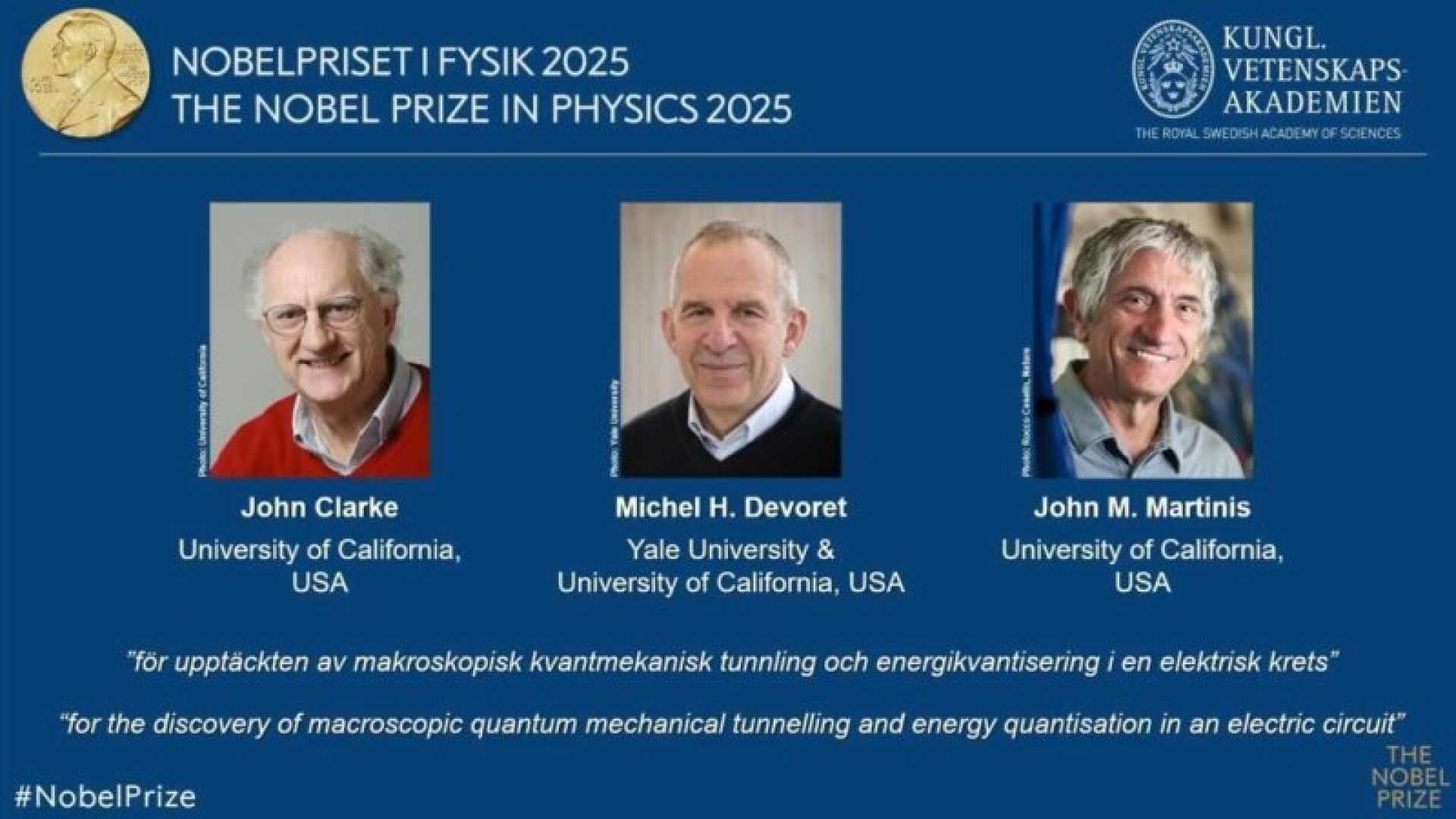News
Nobel Prize in Physics Awarded for Quantum Mechanics Breakthrough

STOCKHOLM, Sweden — The Nobel Prize in Physics for 2025 has been awarded to John Clarke, Michel H. Devoret, and John M. Martinis for their groundbreaking experiments demonstrating macroscopic quantum tunnelling and energy quantisation in an electrical circuit.
The laureates’ research, conducted at the University of California, Berkeley, between 1984 and 1985, illustrated how quantum phenomena typically observed on a microscopic scale can manifest in a system large enough to hold in a person’s hand.
Their experiments involved a superconducting electrical circuit made up of two superconductors separated by a thin non-conductive layer. The team showed that particles within the superconductor could tunnel through electromagnetic barriers, behaving as a single particle throughout the circuit. This allowed them to control the quantum state of the system, leading to unexpected energy transitions.
“What we found was counterintuitive yet fascinating,” Clarke said. “We could measure how these Cooper pairs behave collectively, resembling a single, giant particle.”
The research tackled significant questions within quantum physics, which deals with particles that are smaller than what can be observed using standard microscopes. By successfully demonstrating tunnelling at a macroscopic level, the researchers opened new avenues for understanding phase transitions and superconductivity.
In a key experiment, they gradually introduced microwaves of various frequencies into the electrical circuit, allowing them to measure how microwave energy influenced the system’s voltage state. Scientists characterized the zero-voltage state where the Cooper pairs are trapped, verifying that energy was absorbed and emitted in quantized amounts.
This insight aligns with the principles of quantum mechanics, suggesting that large systems can exhibit behaviors linked to smaller particles governed by the laws of physics.
The implications of this work stretch further into potential applications, including the development of future quantum computers, where superconducting circuits could play a vital role. John M. Martinis later leveraged these discoveries in his own work on quantum computing.
The Royal Swedish Academy of Sciences praised the laureates for their precision and skill in turning theoretical concepts into tangible observations, which will benefit both ongoing research and practical quantum technologies for years to come.
For more information on this year’s Nobel Prize announcements, visit the Nobel Prize website.












